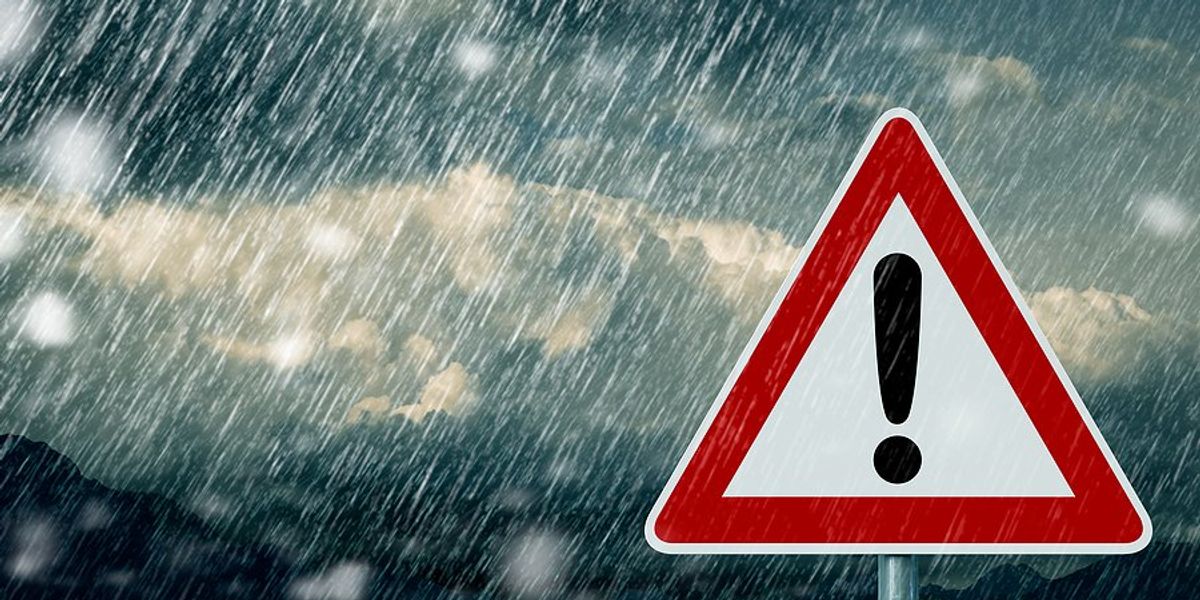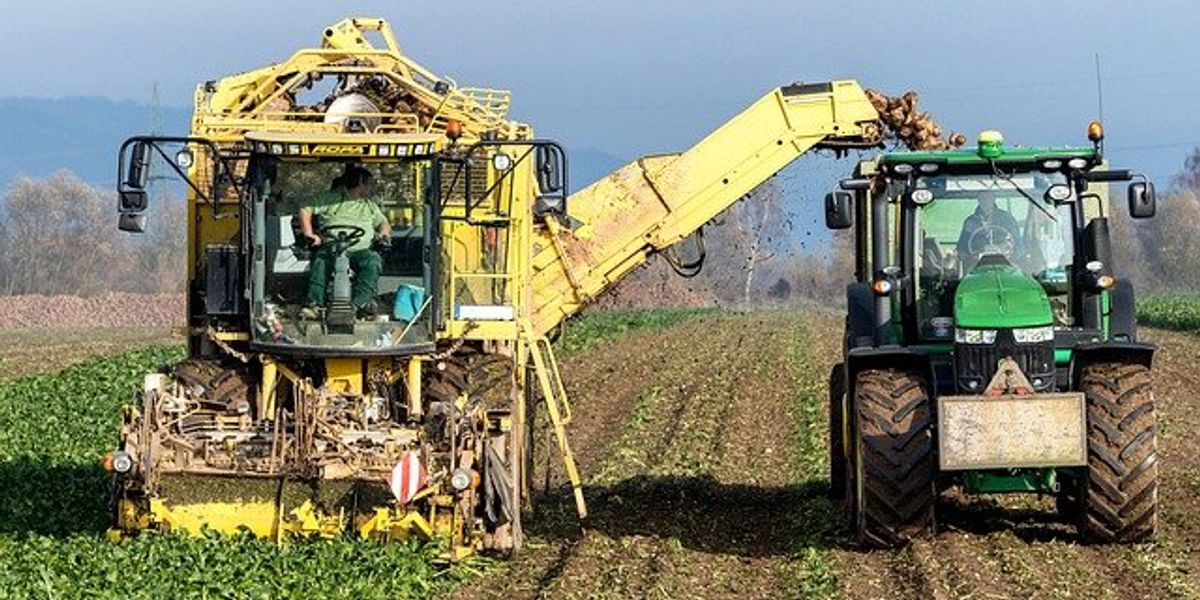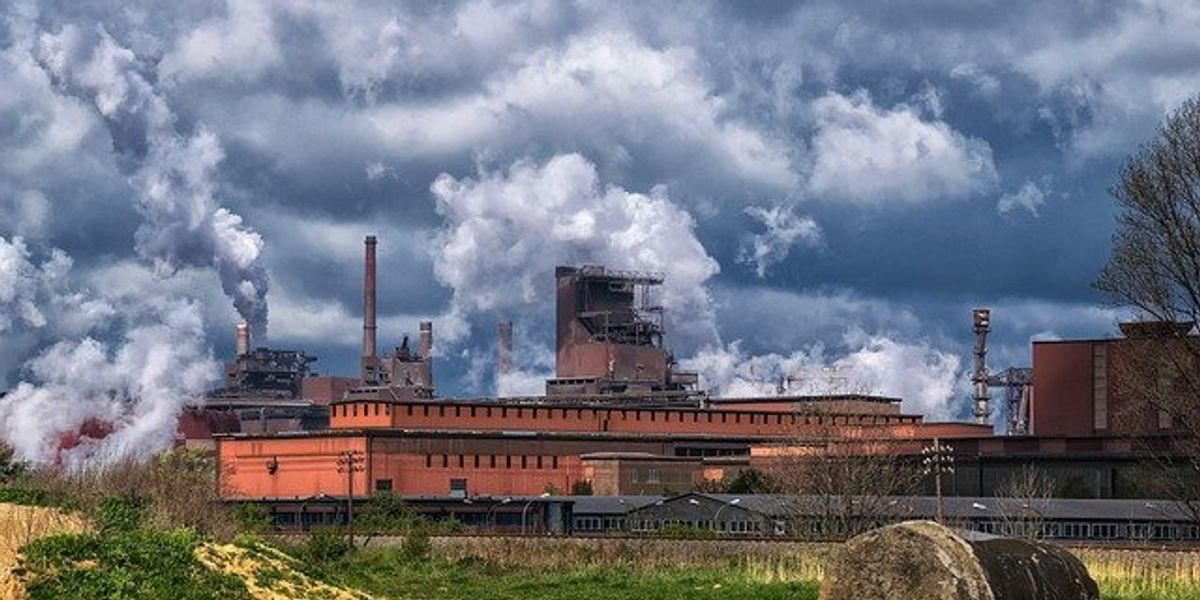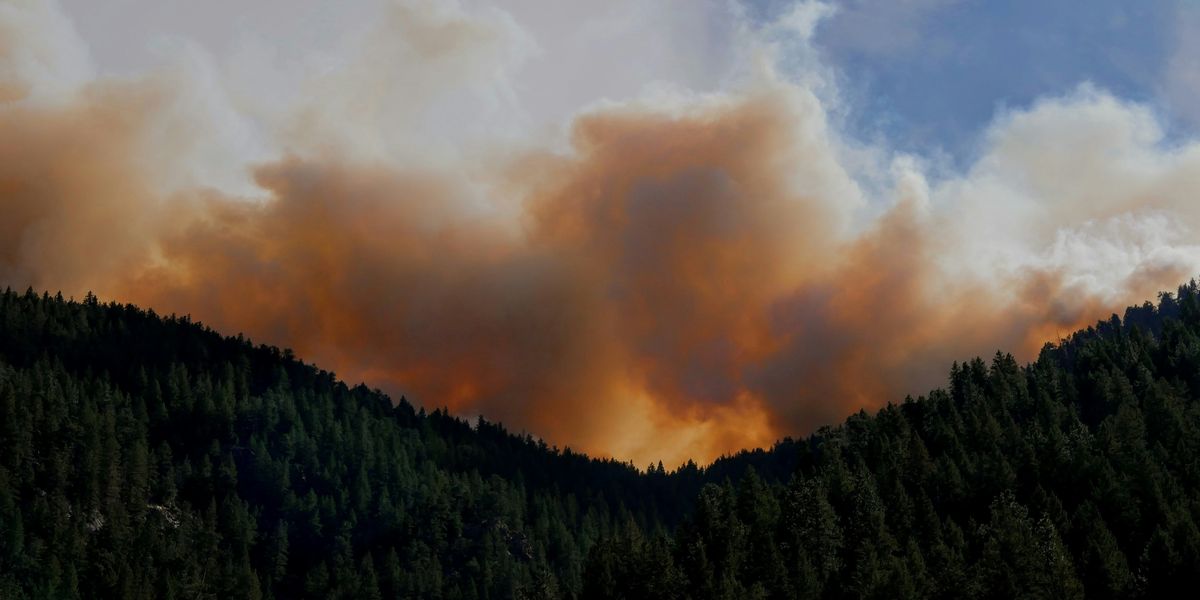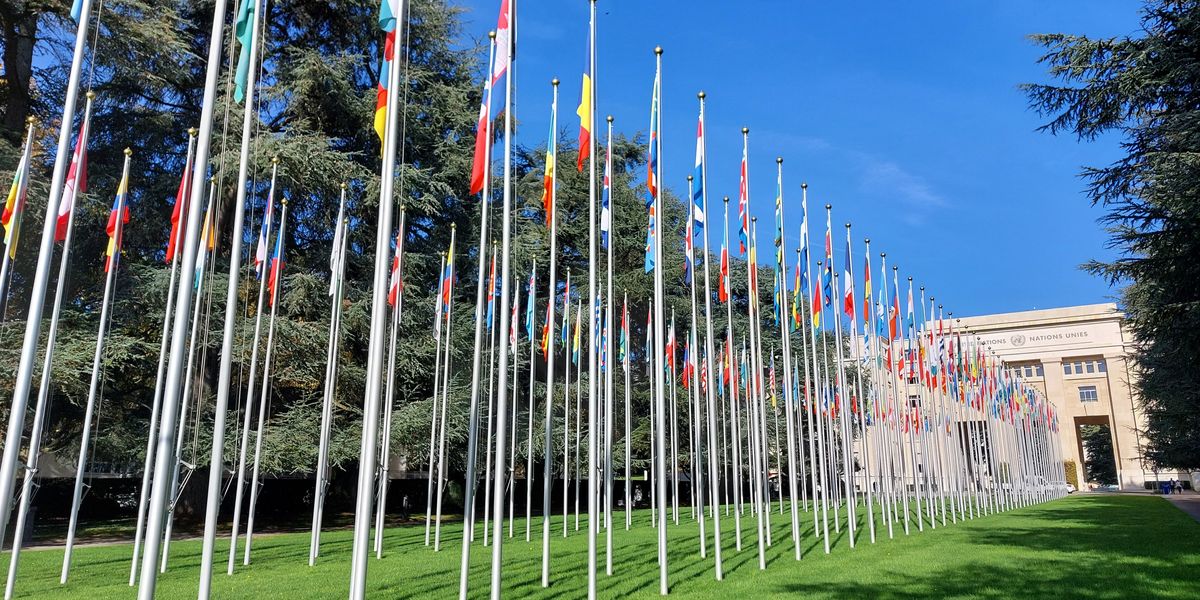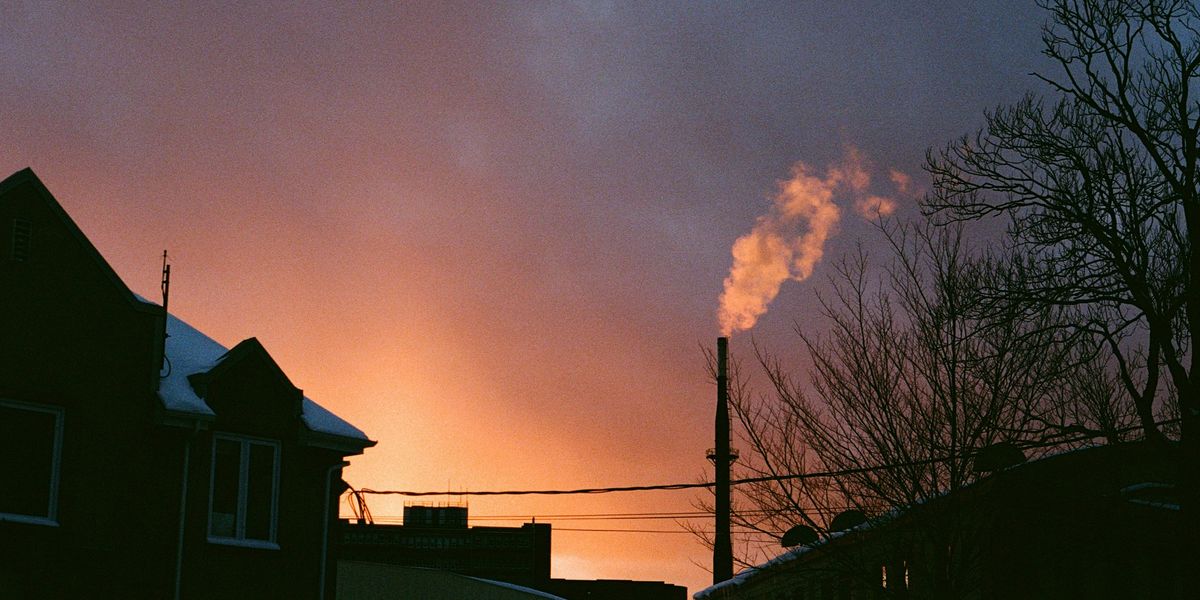allergy_hypersensitivity
California fires leave 31 dead, a vast landscape charred, and a sky full of soot.
The reach of the blazes is spreading dramatically further by the day, as thick plumes of smoke blow through population centers across the Bay Area.
SONOMA, Calif. — Some of the worst wildfires ever to tear through California have killed 31 people and torched a vast area of the state’s north this week, but the reach of the blazes is spreading dramatically further by the day, as thick plumes of smoke blow through population centers across the Bay Area.
Everything now smells burnt. Hills and buildings are covered in a haze. Residents nowhere near the front lines of the fires now venture out wearing air masks. On a hillside above the Russian River, a broad and menacing band of fire is turning a blue sky into a gray miasma of soot.
Air-quality, based on levels of tiny particles that can flow deep into the lungs, is rated “unhealthy” across much of Northern California, and smoke has traveled as far as Fresno, more than 200 miles to the south. The effects are many: schoolchildren are being kept inside during recess, the Oakland Raiders canceled their outdoor practice on Thursday to prevent players from breathing in the bad air, and doctors are reporting an increase in visits and calls from people with lung and heart trouble.
It is the 31 deaths, however, a toll that surpasses the official number of people killed by the single deadliest wildfire in state history, that has horrified Californians. The Griffith Park fire of 1933, in Los Angeles, killed 29 people despite burning a mere 47 acres, according to officials.
Late Thursday, the authorities said they had identified 10 of 17 people who were killed in Sonoma County. Most were in their 70s and 80s, and most were found in houses. One was found next to a vehicle.
Continue reading the main story
Related Coverage
California’s Wildfires: Why Have They Been So Destructive? OCT. 11, 2017
California Wildfires Death Toll Rises to 29 as Vast Region Is Scorched OCT. 11, 2017
‘Everything Was Incinerated’: Scenes From One Community Wrecked by the Santa Rosa Fire OCT. 10, 2017
Advertisement
Continue reading the main story
“We have found bodies that were nothing more than ash and bones,” said Robert Giordano, the Sonoma County sheriff. In some cases, he said, the only way to identify the victims was by the serial numbers stamped on artificial joints and other medical devices that were in their bodies.
Continue reading the main story
Photo
William Roman, 13, wore a face mask as he watered plants in Santa Rosa. Credit Jim Wilson/The New York Times
Because the fires have sent so many residents scrambling for safety, separating them from relatives, the authorities have received reports of 900 missing people and have deployed 30 detectives to track them down. Officials said they had confirmed the locations and safety of 437 people and were still looking for the other 463.
If they cannot find them by phone or online, they send search and rescue teams with cadaver dogs to the homes — if the homes are accessible, which in many cases, they still are not.
“It’s going to be a slow process,” Sheriff Giordano said.
Statewide, there were 21 major fires still burning on Thursday, which had consumed more than 191,000 acres since the outbreak began on Sunday night, said Ken Pimlott, the chief of Cal Fire, the state firefighting agency. The number of separate fires rises and falls often, as new blazes flare up and old ones merge, but the size of the devastated area has grown steadily.
Underscoring the vast scale of the crisis, a line of fire that appeared to span at least two miles descended into Alexander Valley, a wine grape growing region in Geyserville along the Russian River. Thick white columns of smoke poured from the forested hillside above the vineyards as the fire crept down into the valley.
Health officials were particularly focused on young children, who are at a higher risk than adults from dirty air. They breathe faster and take in more air than adults because they run around more. They also have smaller airways, so irritation in those narrower pipes is more prone to cause breathing trouble.
“People with pre-existing heart and lung disease, the elderly and young children should stay in the house with the windows closed,” said Dr. John Balmes, an expert on the respiratory effects of air pollutants at the University of California, in both Berkeley and San Francisco.
Continue reading the main story
From Our Advertisers
Photo
Firefighters in Sonoma looked at a wall of smoke rising from the Norrbom Fire burning across the valley. Credit Jim Wilson/The New York Times
Certain masks can filter out fine particles, but surgical masks are useless, and so are the ones used to protect against big particles. The masks that work are a type called N95, available in many hardware stores.
Nancy Barkley, 40, a nurse from Indiana who is on a 13-week assignment unrelated to the fire emergency, drove dozens of miles from Santa Rosa to find face masks.
“I kept on driving because they were out everywhere,” she said, pulling down her surgical mask to talk.
Northern California is accustomed to wildfires and occasional wafts of smoke that drift with the winds. But nothing like this.
“I’ve lived here 50 years — I’ve never seen it this bad,” said Paul Ackerley, a 90-year-old World War II veteran.
Mr. Ackerley was walking through his neighborhood Wednesday when a woman stopped her car and offered him a mask.
Continue reading the main story
Photo
Smoke hung in the air in Sonoma’s town square on Thursday. Credit Jim Wilson/The New York Times
People closest to the fires have the greatest risk of health problems. There, heavy smoke can include toxic substances emitted when man-made materials burn. Plastics can release hydrochloric acid and cyanide.
“Smoke inhalation can kill you,” Dr. Balmes said. “There’s no doubt about that, but it’s all dose-related. If you breathe in a lot of smoke from any fire, especially a fire in a building with man-made materials that can emit these toxins, you basically have chemical burns of the airway.
“Just like your skin can slough off when it’s burned, the airway lining can slough off. It can be life-threatening. People have to be intubated and put on a ventilator,” he said.
Newsletter Sign Up
Continue reading the main story
California Today
The news and stories that matter to Californians (and anyone else interested in the state), delivered weekday mornings.
You agree to receive occasional updates and special offers for The New York Times's products and services.
See Sample Manage Email Preferences Privacy Policy Opt out or contact us anytime
Hospitals near the worst fires are struggling as they continue to take in patients.
At Santa Rosa Memorial, the city’s largest hospital, technicians installed a large air filtration system to clear smoky air from the hospital lobby. The hospital has handled 130 fire-related cases since Sunday night, when the fires began. Bus drivers in the city have been issued face masks.
“We’ve seen patients who have chronic lung disease, like emphysema, generally older patients, which is really exacerbated by the smoke,” said Dr. Chad Krilich, chief medical officer for St. Joseph Health, which includes Santa Rosa Memorial, another hospital and other facilities in Sonoma County.
“For some of them, it’s really life-threatening,” he said, adding that patients even without asthma or other lung problems are coming in with breathing trouble. Most are being treated in the emergency rooms, which would normally see 105 to 135 patients a day, but are now seeing 150 to 180 a day.
Continue reading the main story
Photo
Capt. John Clays lit a backfire on Wednesday in Sonoma County. Credit Jim Wilson/The New York Times
Their inpatient count rose at first, but they have been transferring patients elsewhere, “because we are at risk of evacuation, too,” Dr. Krilich said, adding, “We know at least 108 of our employees are homeless, and 46 others have had to evacuate.”
Steve Huddleston, vice president for public affairs of NorthBay Healthcare, said the network has two small hospitals and three outpatient clinics in Solano County, east of the fires. One of its outpatient clinics is less than a mile from the fire line, but still operating.
In the emergency rooms and the clinics, he said, “we’re seeing 100 patients a day with respiratory distress and asthmatic attacks from the smoke.”
Many have chronic lung disease or asthma, but not all.
“All of our beds are full, and they have been for two days,” Mr. Huddleston said.
He added: “We’re on the edge of feeling overwhelmed. The staffing is becoming challenging. We’ve had half a dozen of our physicians or staff members lose their homes in the fires. We have staff members who live in the evacuation zones, and they’re trying to get their belongings and their loved ones out of there.”
In areas directly affected by the fires, many schools have canceled classes for the week, leaving parents scrambling.
On Thursday, William Roman, 13, a middle-school student, was helping his grandfather in a landscaping job at a strip mall in Santa Rosa, watering plants — with a face mask on.
“If we’re going to play outside we need to wear a face mask — that’s what my mother says,” William said.
Depending on the winds, the smoke can range from heavy to none. In parts of Santa Rosa on Thursday, there was something resembling a blue sky. Yet even when the smoke was not visible, the outdoors smelled like a fireplace.
Thomas Fuller reported from Sonoma, Calif., and Denise Grady and Richard Pérez-Peña from New York. Matt Stevens contributed reporting from New York.
Napa fires make San Francisco air worse than Beijing, causing a run on masks.
Home Depot is sold out of face masks, people sleeping in shelters have bandanas tied around their faces.
NAPA, Calif. — Home Depot is sold out of face masks, people sleeping in shelters have bandanas tied around their faces and residents even 50 miles away from the fires in northern California find themselves coughing and hacking as smoke and haze blanket the area.
The air quality index for San Francisco, Silicon Valley and the area around the fires was predicted to hit 180 on Thursday, according to the Environmental Protection Agency, or nearly five times what's considered safe.
That's even worse than famously polluted Beijing, whose southern suburbs were measured at 154 on Thursday by the U.S. embassy there.
"The federal (safe) standard is 35," said John Balmes,a professor of medicine at the University of California-San Francisco and expert on environmental health.
Residents who signed up for alerts from local authorities were barraged with air quality health advisories and Spare-the-Air alerts. Schools cancelled recess, teams cut sports practices and parents received notices that weekend football and soccer games might not be held.
The air quality level has been in the "unhealthy" to "very unhealthy" range since the fires began early Monday morning and is expected to stay bad as long as they continue. Wind and geography mean that the haze-affected area extends well beyond the towns where the fires are burning, putting millions of people in harm's way.
"It's smoke, it's particulate matter, it's even toxins from burning plastics and homes. All have very irritating qualities. People will have stinging eyes, trouble breathing, scratching throats and running noses," said Catherine Forest, a physician and expert on environmental toxins at Stanford Health Care in Palo Alto, Calif.
The levels of small particulate matter reported near the fires and further south around San Francisco are especially dangerous for those with pre-existing lung and heart disease, such as asthma, COPD (Chronic Obstructive Pulmonary Disease) and any kind of heart disease.
The best advice is to simply stay indoors with the windows shut and air conditioning or heaters set to recirculate air, said Forest.
"Don't go out if you can avoid it, don't exercise if you can avoid it. Keep the elderly, small children and anyone with heart or lung disease inside," she said.
But for the hundreds of thousands of people who have to go about their daily work, not to mention the tens of thousands in the fire area, that's impossible advice to follow.
A mask, but not just any mask
For them, the best bet is to wear a face mask. But it's got to be an OSHA-certified N95 particulate filtering mask.
"Not the flat hospital-type masks people sometimes wear. Those are worse than useless because they give you a false sense of security" and don't filter out the most dangerous small particles, said Forest.
The N95 masks have been in short supply in the Bay area due to the fires. At a Home Depot in Fairfield, Calif., where a fire was burning north of town and some areas were under evacuation watch, a steady stream of customers came in looking for masks. But the shelf was bare.
One man asked a Home Depot staffer if there were any left and when he was told no, asked if he could buy the one hanging around the staffer's neck.
"You're not the first guy who's offered that," said the staffer, who declined both to sell the mask and to give his name.
At an Orchard Supply Hardware in Berkeley, Calif., a woman answered the phone, "Good morning Orchard Supply, we are sold out of all masks, how may I help you?" The store was working on getting an emergency truckload of masks.
Johnston Medical, also in Berkeley, was one of the few stores that still had some of the masks recommended by the CDC on hand. Clerks scrambled to help shoppers find masks in picked-over boxes. After hanging up from yet another call, one clerk turned to the other: "Guess what they wanted?"
The empty shelves are only very local, unlike other times, said Balmes. During the global SARS outbreak in 2012 there was a global shortage.
"The Chinese were buying them all up," said Balmes.
When people do find the masks, there are tricks to making them as effective as possible. First is to get the right size. While hardware stores typically only sell the large size of the masks, they actually come in three sizes, small medium and large. Try medical supply stories for the smaller sizes that tend to work better for women and children, experts suggest.
Then bend the flexible metal strip at the top of the mask so that it fits the curve of the nose, to get it the tightest possible.
"They have to seal around, like a snorkel mask," said Balmes.
Such masks are commonly worn by people in cities like Beijing and Shanghai, where residents live with dangerous air quality for much of the year. By Thursday, they were becoming a regular sight on the streets in Napa, Sonoma and Mendocino.
For those in their cars, the best advice is to keep the windows rolled up and put the air system on recirculate rather than having fresh air come in from the outside.
"You can run the heater or the air conditioner, as long as you've got it on recirculate," said Balmes.
Overall, the poor air quality shouldn't pose a long term threat to healthy individuals as long as it doesn't last more than another few days, say the experts.
Healthy lungs are remarkably self-cleaning, said Forest. They’re lined with mucus-coated, hair-like projections called cilia. The mucus catches the tiny particles that we breath in and then the waving, beating motion of the cillium moves them up and out of the lungs.
“It’s kind of like a little escalator. It carries it up out of your lungs and you either swallow or cough it out. Either is fine,” she said.
HEPA filters
Another option is to run a home air filter. As long as it’s got a HEPA (high efficiency particulate air) filter can catch most, though not all, fine particles, defined as 2.5 microns in diameter or less, which can irritate lungs.
“They’re so small you can’t see them, but they’ll make you cough,” said Baumes.
The trick with HEPA filters is to change the filters, said Forest. You can’t just buy them and run them forever without putting in a new filter, "or they end up not doing anything at all," Forest said.
Contributing: Jessica Guynn, from Berkeley, Calif.
Wildfires: How they form, and why they're so dangerous.
Everything you need to know about wildfires.
As deadly wildfires continue to rage across Northern California’s wine country, with winds picking up speed overnight and worsening conditions to now include a combined 54,000 acres of torched land, it now seems more important than ever to understand how wildfires work, and their lasting implications on our health and the environment.
HOW A WILDFIRE STARTS
Though the exact source of Sonoma County’s wildfires is unclear, authorities have pointed to the fact that 95 percent of fires in the state of California are started by people, according to CNN.
Meteorologists aren’t yet able to forecast wildfire outbreaks, but there are three conditions that must be present in order for a wildfire to burn. Firefighters refer to it as the fire triangle: fuel, oxygen, and a heat source. Four out of five wildfires are started by people, but dry weather, drought, and strong winds can create a recipe for the perfect disaster—which can transform a spark into a weeks- or months-long blaze that consumes tens of thousands of acres.
Another possible cause of forest fires is lightning. Scientists have found that every degree of global warming sets off a 12 percent bump in lightning activity. Since 1975 the number of fires ignited by lightning has increased between two and five percent.
A TRICKY RELATIONSHIP
Historically, wildfires are actually supposed to be beneficial to certain natural landscapes, clearing underbrush in forests and triggering the release of seeds in some plant species, such as the Jack pine.
Unfortunately, the suppression of naturally occurring, low-intensity forest fires has actually aided in the ability for high-intensity wildfires to run rampant. (Watch a time-lapse of the beauty and danger of wildfires.)
In the first half of the 20th century, the U.S. Forest Service suffered from what historian Stephen Pyne calls “pyrophobia,” or the desire to suppress all wildfires (even the good ones). Since the science of forestry first took root in temperate Europe, which is home to a vastly different forest ecosystem than those found in the United States, fire was seen by early U.S. foresters as a problem caused by people.
In some places, the path toward a safer, more ecologically sound relationship with fire is being blazed with prescribed fire, and what’s being called by officials as “managed wildfire.” Fire crews put their efforts to suppress wildfires around the most fire-prone areas, such as communities, municipal watersheds, and sequoia groves. Otherwise they are learning to let some fires burn themselves out, as nature intended.
WILDFIRES CAN HAVE LONG-LASTING IMPLICATIONS FOR OUR PLANET
Forest fires actually have the ability to heat up the entire planet, a NASA study from 2016 revealed. In ecosystems such as boreal forests, which store more carbon than any other terrestrial ecosystem on the planet, the effects of climate change are playing out twice as fast.
Fires ravaged the boreal forests of Canada’s vast north woods in May 2016 and continued for months, consuming millions of acres of trees, and scorching the rich organic soil on the forest floor, which serves as a large reservoir for carbon. For every degree that our planet warms, the forest needs a 15 percent increase in precipitation to compensate for increased dryness. (See how megafires are remaking American forests.)
Similar to the case in Northern California, investigators believe that Canada’s boreal forest fire was caused by humans.
Barack Obama visited Alaska in 2015 to highlight the dangers of climate change, calling up images of the hundreds of wildfires that burned across the state just that summer. At the time, 2014 had been the warmest year on record, a milestone that has now been surpassed by 2016.
THE EFFECTS OF FIRE ON PEOPLE
Worldwide, wildfire smoke kills 339,000 people a year, mostly in Asia and sub-Saharan Africa, according to estimates. Tenfold increases in asthma attacks, emergency room visits, and hospital admissions have also been reported when smoke blankets the places where people live.
Common in places such as the western United States, layers of stagnant air called inversions can be created by fires and are responsible for holding smoke down where people breathe. Airborne, microscopic particles that slip past the body’s defenses and into the farthest reaches of the respiratory system can begin to coagulate the blood, forming a thick goo. Smoke also contains carbon monoxide, causing long-lasting damage to the heart. (Learn wildfire safety tips.)
Emergency room visits for heart failure jumped 37 percent, and saw a 66 percent increase for breathing problem-related visits following the smokiest days of a big 2008 peat fire in eastern North Carolina, EPA researchers found.
HOW FIRE IMPACTS WILDLIFE
Wildlife tend to have a very different relationship with fire. Some have evolved to live with it, and some even thrive after fires. That’s not to say all wild animals call fire a friend—there are some who can’t outrun the quickly moving flames, and young or small animals are particularly at risk.
Slow-moving animals such as koalas, whose natural instinct is to crawl up further into a tree, may end up trapped.
For many environments, fire doesn’t actually have to mean death, but instead change, re-birth, or new opportunities. For example, woodpeckers will fly in to feast on bark beetles in dead and dying trees, and leave when the beetles are gone.
A year-old forest will have a different set of flora and fauna inhabiting it than a forest that is 40 years old, and according to wildlife biologist Patricia Kennedy, “a lot of species require that reset,” which comes from a fire.
In cities, it's the smoke, not the fire, that will get you.
As climate-change fuels increasingly large and frequent wildfires that hit closer and closer to densely populated urban centers, the smoke they produce is becoming a public health crisis.
NO ONE KNOWS what sparked the violent fires ablaze in the hills of California wine country. In the last five days, the flames have torched more than 160,000 acres across Napa and Sonoma counties, reducing parts of Santa Rosa to piles of cinder and ash and leaving more than 20 dead and hundreds missing. And far from the white-hot embers of destruction, residents from San Francisco to Sacramento to Fresno have been waking up this week to choking fumes, commuting to work under skies tinged orange with dust and soot.
Now, in just a single fire season, ash has rained down on Portland, Seattle, San Francisco, and Los Angles. That might seem like an anomaly—but it’s more a portent of the country’s new, char-coated normal. As climate-change fuels increasingly large and frequent wildfires that hit closer and closer to densely populated urban centers, the smoke they produce is becoming a public health crisis.
“Over the past two days we’ve experienced unprecedented levels of air pollution in the region,” says Kristine Roselius, a spokeswoman for the Bay Area Quality Management District. Things cleared up slightly on Wednesday, but mercurial weather patterns make it hard to know if the worst is still yet to come. “It’s very difficult to forecast what the air quality will be at any moment because we’ve still got active fires.”
But in general, the forecast is not good. Roselius says they’re especially concerned about the elevated levels of PM2.5—very small bits of liquids and solids suspended in the air, no bigger than 2.5 nanometers across. Particles this small can be inhaled into the deepest recesses of the lungs, into the broccoli-shaped alveolar sacs, where they bypass the body’s filtration systems and slip directly into the bloodstream. What exactly is in those tiny droplets and specks depends on the source, the season, and atmospheric conditions. But it’s the amount of particulate matter more than the type that matters for health.
Good clean air will have fewer than a dozen micrograms of PM2.5's per square meter of atmosphere. Most people won’t notice anything up to about 55 micrograms, but folks with heart or lung disease will likely experience shortness of breath, wheezing, coughing, and chest pain. Asthma sufferers will become more prone to attacks. And as PM2.5 concentrations rise above 55 µg/m3, anyone working or exercising outside will start to notice.
Breathing will start to feel more difficult, and you might get light-headed. Children get hit harder, since they breathe faster than adults. Beyond 100 µg/m3 even healthy adults just walking around will start feeling a sting in their eyeballs and at the back of their throats, chest tightness, and the need to cough. Air monitors near the WIRED offices, 50 miles from the fires, were reading out 137 µg/m3 on Wednesday, and the mucous membrane burn was quite noticeable indeed. Symptoms like these will go away when air quality improves. But breathing in a lot of PM2.5’s can lead to serious long-term health problems.
So first things first: protection. Public health officials like Roselius are advising people with chronic respiratory illness to seek filtered air, either in the city or outside the region. That means buildings with high efficiency mechanical or electronic air cleaners, like these public libraries in San Francisco. If you’ve got air conditioning at home, set it to recirculate mode and make sure all your doors and windows are tightly closed. Three out of five households in California report having air conditioning, although most of these are in the southern parts of the state. Karl the Fog provides all the air conditioning the Bay Area has ever really needed. Good for the energy grid. Bad for those seeking a smoke-free haven.
As for facewear, a bandana worn around the mouth won’t do anything but making you feel like an outlaw. One-strap paper masks or surgical masks won’t help you either. Your best bet: disposable respirators, like the ones found at hardware stores and pharmacies. Look for ones labeled N95 and make sure they’re properly sealed around your face (that goes double for San Francisco’s bearded hipsters).
But the best thing to do is limit your time outside as much as possible. And don’t exert yourself any more than you have to. Because while it’s hard for scientists to predict how bad air quality will be in the aftermath of a wildfire, it’s even harder for them to predict the long-term public health impacts.
Over the years, researchers have tried unsuccessfully to measure the full health effects of wildfire smoke. The general consensus, based on hospital records, is that more smoke means more trips to the doctor for things like asthma, pneumonia, bronchitis, COPD, and heart failure. Children, the elderly, women, African Americans, and those with underlying chronic diseases appear to be most susceptible. But it’s been tricky to prove causation, because air pollution comes from so many places—wildfires, yes, but also tailpipes and factories.
That’s one of the reasons the Environmental Protection Agency just launched a crowd-sourced study to understand the link between wildfire smoke and health impacts. Using an app called SmokeSense, anyone can now send the EPA a snapshot of the air quality in their zip code, report nearby smoke or fire, and list symptoms they're experiencing.
It’s work that’s increasingly important as more acres of American forests go up in smoke each year. “As the climate continues to change, we’re going to see much more smoke, at higher intensities in the future,” says Jia Coco Liu, an environmental health researcher at Johns Hopkins. Based on air pollution from past and projected future wildfires in the American West, Liu and a team of scientists at Yale estimated that by mid-century more than 82 million people will experience smoke waves—more than two consecutive days with high levels of wildfire-related air pollution. People in the new Smoke Belt—Northern California, Western Oregon, and the Great Plains—are likely to suffer the highest exposure.
And there’s one more bit of bad news: Just as fire behaves differently in a city than it does out in the wild, so does smoke. Urban areas, with their concrete roads and walls of glass and steel, tend to stop a fire in its tracks. All those buildings and alleyways prevent wind from blowing fresh embers around. But those same aerodynamics mean that smoke gets trapped in cities. Liu’s latest research, which will appear in an upcoming issue of the American Journal of Epidemiology, found that metropolitan areas, even ones very far away from any actual wildfires, had much higher levels of particulate matter in the air than rural areas. An urban smoke island effect, if you will.
By looking at Medicare billing information, Liu was able to see a corresponding uptick in respiratory and other health issues. She hopes the research will help raise awareness that wildfire smoke is more than a nuisance. “People think of wildfires and they think about houses burning down,” she says. “From the city it can feel like a faraway problem. But actually, it’s the smoke that has a much higher impact.”
A dirty power plan.
Many states plan to maintain their own clean-air regulations. The N.C. legislature, unfortunately, won’t allow that here.
Our Opinion: A dirty power plan
6 hrs ago (0)
photo with edit 101117
AP photo
To President Donald Trump, the Environmental Protection Agency should be a job creator, not a job killer.
But that idea was nowhere in the mind of President Richard Nixon, who asked Congress to create the EPA.
“Clean air, clean water, open spaces — these should once again be the birthright of every American,” he said in his 1970 State of the Union address.
Today, there’s a different aspiration governing the EPA. It’s to bring back coal as the leading energy resource in the country. The agency’s name could be changed to CPA for Coal Protection Agency.
EPA Administrator Scott Pruitt, who repeatedly sued the agency when he was attorney general in Oklahoma, signed a measure Tuesday seeking to repeal the Clean Power Plan. The action follows an executive order by the president setting a “national policy in favor of energy independence, economic growth, and the rule of law,” the EPA said in a news release.
Of course, that has nothing to do with the agency’s former mission of protecting the environment. Its purpose now is to clear obstacles from Trump’s campaign promise to bring back coal jobs. To that end, it’s actually intervening in the energy marketplace to pick winners and losers — an approach usually derided by conservatives.
The marketplace has decided that coal’s hey-day is over. Trump and his political supporters blame former President Barack Obama for killing the coal industry, but coal jobs were fast vanishing before Obama took office. The trend continued in recent years because of a superior competitor — cheaper, cleaner and more abundant natural gas. From 2008 to 2016, 17 percent of U.S. coal-energy capacity retired, and that trend will continue as companies such as Duke Energy close inefficient coal plants or convert them to natural gas, and further add renewable resources to their portfolios.
Coal isn’t only more expensive than natural gas, it leaves high residual costs. Duke has proposed an average 13.6 percent rate hike, about half of which is related to coal-ash storage.
“A typical residential family actually generates more than 150 pounds of coal ash every year from the electricity that they consume,” Duke spokesman Jeff Brooks said in August. Wow. How much more do we want?
A coal-ash spill into the Dan River in 2014 made national headlines, and seepage from storage basins continues to be a concern for nearby residents. And, obviously, burning coal adds heavily to air pollution, posing health risks and contributing to greenhouse gases responsible for global warming, according to climate scientists.
The Trump administration, however, rejects this science. The president has called climate change “a Chinese hoax.” Pruitt discounts a human impact on climate. His recently nominated deputy, Andrew Wheeler, was a top aide to Sen. James Inhofe, who once carried a snowball into the Senate chamber to “prove” the Earth isn’t warming. More recently, Wheeler has worked for Murray Energy, a coal company.
These are the people now entrusted with environmental protection. Yet, they admit that’s not their priority.
But even Robert Murray, head of Murray Energy, warned Trump about his coal jobs promise. “I suggested that he temper his expectations. Those are my exact words,” Murray told The Guardian in March. “He can’t bring them back.”
All Trump can do, then, is give the green light for coal plants to emit more pollutants into the air for as long as they’re still in operation, with disregard for environmental consequences or the health effects on people with asthma or other medical conditions.
Many states won’t accept that and plan to maintain their own clean-air regulations. The N.C. legislature, unfortunately, won’t allow that here. But environmental groups, joined by progressive states, can ask the courts to make the EPA do the job President Nixon intended and which it has done well — until now.
What needs to be done to stop wildfires in drought-killed forests.
A century of fire suppression followed by the worst drought in recorded history has put California’s forest landscapes and water supply at risk.
WITH 17 LARGE wildfires in California igniting in 24 hours this week, October is shaping up to be a brutal month for wildfires, as it often is. It’s too soon to know what caused multiple conflagrations spreading across Northern California’s wine country, but elsewhere in the state dead and dying trees have been the subject of much concern. The five-year drought in California killed more than 102 million trees on national forest lands. That is a gigantic problem in itself that will lead to huge wildfire risks in the future and big changes in wildlife habitat.
With that huge number in mind, it is easy to forget that the forests were already in a sorry state. It’s now widely understood that a century of misguided – but well-intentioned – policies over the past 100 years produced forests that are too densely packed with small trees and too vulnerable to possibly catastrophic fires.
Water supplies are also a concern, because the forests are nature’s water-storage sponges. They capture snowfall and release it slowly, helping Californians survive long, dry summers. But there’s also a concern that overgrown forests consume too much water, and that thinning some forests could generate more runoff.
A new report by the Public Policy Institute of California proposes some different approaches to begin chipping away at the problem. It recommends some changes in state law and new contracting practices, among other things. It also suggests some changes in public attitudes.
To learn more, Water Deeply recently spoke with Van Butsic, the study’s lead author. Butsic is a land system scientist with a Ph.D. in forestry; he works as an assistant cooperative extension specialist in the University of California, Berkeley, Department of Environmental Science, Policy and Management.
Water Deeply: How are California’s forests doing in the wake of the drought?
Van Butsic: The drought, coupled with the last century of management actions, caused a huge pulse in tree mortality. There are always dead trees in the woods, but the additional dead trees in the environment due to the drought is about 15 million a year.
One hundred years ago many, many large trees were harvested. Then we have a century of fire suppression, so we take fire out of the equation. So new trees are coming back and they’re not burning. Then, about 30 years ago, we stopped harvesting on most national forests. So we have a condition where the forests are of a much higher density than they’ve ever been before. Then we have the drought, and lots of trees on the landscape are susceptible to bark beetle outbreaks due to lack of water.
Water Deeply: How much additional prescribed fire is needed to bring the forests back to a healthy state?
Butsic: We didn’t quantify that ourselves. But what I would say is, the statistics we’ve seen from a number of good scientists have put the number of additional acres that need to be treated at somewhere between 200,000 and 500,000 per year. So a very large amount. The numbers in those studies come from a historical look at what was normal 100 or 150 years ago. That’s more than a doubling of what’s going on now. So it’s a substantial increase. I want to say that right now the Forest Service is doing somewhere between 100,000 and 200,000 per year.
Water Deeply: There’s also a need for more mechanical thinning, or logging. How do we get past the controversy over that?
Butsic: One thing that has happened in California is sort of a distrust of mechanical thinning. Often, when the Forest Service or private landowners say they’re doing mechanical thinning, certain environmental groups think that’s code for clearcutting. One thing we try to say in the paper is this is a valuable tool and it needs to be on the table if we want to get this work done. So making sure mechanical thinning is not written off as code for clearcutting is going to be important if we’re going to manage forests.
Water Deeply: How do we ensure that it’s not clearcutting?
Butsic: There are very strong forest practice laws in California. My understanding of the current regulations governing forest management on federal lands is that in Forest Service Region 5, which California belongs to, it’s really nearly impossible to harvest trees [with a diameter] over 30in (76cm). So these trees are not really at risk, I would say, as long as the Forest Service follows its own recommendations. And yet this is still a stumbling block in conversations about mechanical thinning. People are still very worried about these trees because they’ve seen in the past some large trees disappear. That’s a difficult situation to work with. The laws are in place to protect those trees, and yet people don’t really trust them.
Water Deeply: You recommend state and federal land management agencies justify their continued fire suppression. Why do you suggest that?
Butsic: Most ecologists would agree the long-term suppression of fire has led to a change in forest structure, and probably a decline in forest health. Typically, when agencies do any activity that might cause environmental harm, they need to justify it. We don’t see that for fire suppression. And there’s good reason why you wouldn’t do this on a case-by-case basis. If a fire breaks out around a house, you want to go and put it out. But making sure agencies explain their management choices around wildfire would lead them to use some of their tools, like managed wildfire, more often.
Water Deeply: You report that state law treats wildfire and prescribed fire differently in regard to air quality. Is that still appropriate?
Butsic: There’s a growing body of evidence that prescribed fires are less harmful to humans than non-managed wildfires, because they burn at lower severity, typically. And we know an area burned with a prescribed fire is less likely to burn at high severity in the near future. So clearly, there are long-term air quality benefits to prescribed fire.
But with prescribed fires, there are short-term costs caused by regulation. There’s a lot of planning that needs to go into conducting a prescribed fire for air-quality reasons. And the air-quality reasons are real. We’re not saying people with asthma are not affected by smoke. But we can manage it with prescribed fire and know when the fire is going to happen and know that in the future, we’ll have less risk of severe wildfire. Or we can just leave it to chance and, eventually, we’ll probably get a severe wildfire anyway.
So treating those differently under state law is just problematic.
Water Deeply: What kind of additional mechanical thinning are you calling for?
Butsic: We think mechanical thinning can be really useful in a few ways. If you’re near homes or near roads, mechanical thinning has a very key role to play in those instances. The other is where there are logs that could be harvested that could offset the cost of other treatments. Prescribed fire and managed wildfire are both costly.
There is a number of studies that show mechanical thinning with removal of some sawlogs can be a net profit in certain areas, and the largest trees we looked at removing in the report are 16in (in diameter).
Water Deeply: So why isn’t it happening?
Butsic: There is a number of barriers that we’ve identified to getting the work done. Part of it is the history of distrust. One roadblock is that it is somewhat risky for leadership to try to do these big treatments. If you’re going to do big prescribed fires or let wildfires be managed, there’s risk to the leadership that things could go wrong. And if they do, they look bad. So I do think these groups do not have a risk-taking culture. That’s just not the Forest Service culture. I do think that’s probably hindered them a little bit.
Another barrier is there still are issues with the infrastructure. In some parts of the state, there just are not great places to take the material: sawmills and biomass plants. Some people have said that’s the main roadblock. I’m not sure we agree with that.
Water Deeply: Will these things improve water supply?
Butsic: We think there’s real potential. There’s probably more uncertainty in that science than in other areas. But we do think there’s real potential for the maintenance of the quality and quantity of waters we have today under a healthy forest regime versus an unhealthy one.
Water Deeply: What’s the public’s role? Do we need to be more open-minded about prescribed fire and some kind of logging?
Butsic: I think understanding the role of fire and the necessity of it in the landscape, having the public appreciate the role that fires plays in keeping forests healthy, is something we could improve upon. We need to build the social license to do treatments.
The media often portray fire in the forest as a total destruction. After a fire goes through, it’s not pretty. You see a lot of charred and dead trees. It’s not an appealing landscape. But understanding the long-term importance of having that disturbance on the landscape is certainly something the media could help educate the public on.
EPA Administrator Scott Pruitt announces withdrawal of Clean Power Plan.
Environmental Protection Agency Administrator Scott Pruitt announced Monday his agency's plans to withdraw the Clean Power Plan, the sweeping Obama-era rule regulating greenhouse gas emissions.
Environmental Protection Agency Administrator Scott Pruitt announced Monday his agency's plans to withdraw the Clean Power Plan, the sweeping Obama-era rule regulating greenhouse gas emissions.
While speaking in Kentucky at an event with Senate Majority Leader Mitch McConnell, Pruitt said he will sign the proposed rule repealing Obama's plan Tuesday.
"When you think about what that rule meant, it was about picking winners and losers. Regulatory power should not be used by any regulatory body to pick winners and losers," he said at the event. "The past administration was using every bit of power and authority to use the EPA to pick winners and losers and how we generate electricity in this country. That's wrong."
CNN obtained a copy of the leaked proposal to repeal the milestone Clean Power Plan, the outcome of President Donald Trump's executive orders calling for the review of the plan and questions the legality of the original rule.
"Under the interpretation proposed in this notice, the CPP exceeds the EPA's statutory authority and would be repealed," the proposal reads. "The EPA welcomes comment on the legal interpretation addressed in this proposed rulemaking."
The proposal also says the EPA has yet to determine whether it will create an additional rule on the regulation of greenhouse gases.
EPA to propose repealing Obama-era rule on greenhouse gas emissions
Bloomberg News first reported on the repeal proposal.
The Clean Power Plan requires states to meet specific carbon emission reduction standards based on their individual energy consumption. The plan also includes an incentive program for states to get a head start on meeting standards on early deployment of renewable energy and low-income energy efficiency.
Under President Barack Obama, the EPA estimated the Clean Power Plan could prevent 2,700 to 6,600 premature deaths and 140,000 to 150,000 asthma attacks in children.
When asked earlier this year on Fox News about the health consequences of doing away with the Clean Power Plan, Pruitt ducked the question and focused on how the plan would cost jobs. He argued the plan was bureaucratic overreach.
"As much as we want to see progress made with clean air and clean water, with an understanding that we can also grow jobs, we have to do so within the framework of what Congress has passed," Pruitt said.
Former EPA employees have reacted harshly to the planned repeal of the rule. Obama's EPA administrator, Gina McCarthy, called the proposal "just plain backwards."
"A proposal to repeal the Clean Power Plan without any time line or even a commitment to propose a rule to reduce carbon pollution, isn't a step forward, it's a wholesale retreat from EPA's legal, scientific and moral obligation to address the threats of climate change," McCarthy said in a statement Friday.
Environmental advocacy groups quickly blasted Pruitt's decision, with many vowing to fight the measure in court.
"Now the public has an opportunity to weigh in, as EPA is required to accept public comment on the proposed repeal and a discussion paper on a replacement," Rhea Suh, president of the Natural Resources Defense Council, said in a statement Monday. "In addition, NRDC expects to take EPA to court when the Clean Power Plan repeal is made final."
When reports of the EPA's planned move began to be reported over the weekend, Environmental Defense Fund President Fred Krupp said repealing the plan without replacing it with any protections from "climate-destabilizing pollution" would fail to protect Americans from harmful pollution designated under the Clean Air Act.
And Michael Brune, executive director of the Sierra Club, said Trump and Pruitt are launching "one of the most egregious attacks" on public health and climate safety.
"No matter who is in the White House, the EPA is legally required to limit dangerous carbon pollution, and the Clean Power Plan is an achievable, affordable way to do that," Brune said in a Monday news release. "It is a key element in continuing the progress moving toward clean energy and retiring coal."
Former New York City Mayor Mike Bloomberg, whose philanthropy said it would donate $15 million toward supporting operations of the United Nations Framework Convention on Climate Change after the Trump administration announced intentions to withdraw from the Paris climate accord, tweeted his criticism of the repeal proposal Monday.
"The EPA can repeal the Clean Power Plan but not the laws of economics," Bloomberg tweeted. "This won't revive coal or stop the US from reaching our Paris goal."





